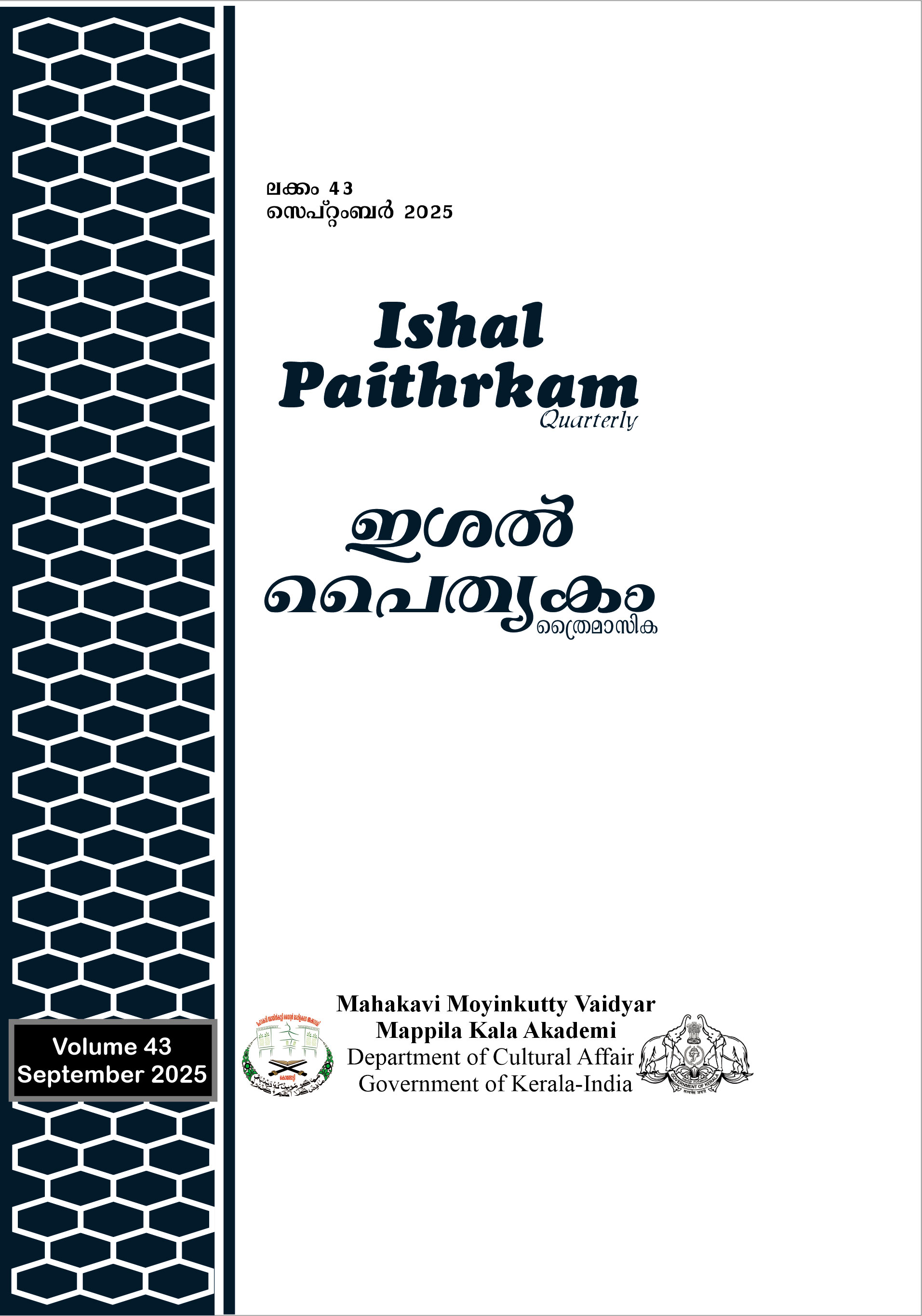Arabic Malayalam: Language and Culture
Keywords:
Arabi-Malayalam, Mappila Culture, Malabar, Kerala tradition, Mappila SongAbstract
Arabi Malayalam can be explained in the simplest way as a way of writing Malayalam in Arabic scripts. It is said that it was created for the Arab traders who came to Kerala; and for religious studies. In any case, Arabi Malayalam retains many words that are foreign to today’s Arabic and Malayalam. It contains many old words that Malayalam has abandoned in course of time. Many local expressions in circulation at different times also found their place in the language. Arabi Malayalam has given literary status to any words and expressions that people use orally. “It indebted not only to the Arabic language”,observes O. Abu. “Its linguistic diversity is unique. Words from oriental languages such as Arabic and Persian, words from Indian languages such as Urdu and Sanskrit, and words from South Indian languages such as Tamil, Kannada and Tulu, sometimes in the form of synonyms and often in the form of derivatives, have gained a wide place in the Arabi Malayalam language. In the same way, the grammars and styles of the said language have also established themselves in the Arabi Malayalam language, with or without contextual changes.” (Page 7)It is recorded that not only words but also styles and grammatical matters have been incorporated into it. However, the argument in this book is that this is a regional/national language. Similarly, there are Arabi Malayalam scholars who argue that Arabi Malayalam has the status of an independent language. There have been works in Arabi-Malayalam in prose and poetry. It includes not only literary works but also scientific texts, religious texts, and philosophical and historical texts. In addition, there were many periodicals, publications, and pamphlets in the Arabi-Malayalam language.In addition to Sanskrit translations such as Ashtanga Hridayam, many other medical books have been written in Arabi Malayalam. N.V.P. Unithiri has spoken about Muslim physicians who were Sanskrit scholars in many speeches. A special method of writing and preserving medicine was developed in Arabi Malayalam. Such notes were written separately in Arabic Malayalam scripts, avoiding the method of writing together. Such medical books may have been helpful for many physicians who could not pursue academic studies.
Downloads
References
Abu, O. (1970), Arabi malayala Sahitya caritram, Kottayam: S.P.C.S.
Aboobaker P.A, (2018), Arabi - Malayalam: Malayalathinte Classical Bhavangal, Kondotty: Mahakavi Moinkutty Vaidyar Mappila Kala Academy.
S Ulloor, (1953), Kerala Sahithya Charithram, Thiruvanathapuram: Sayahna Foundation.
Kutty V.M, (2000), Mappila Pattinte Lokam, Kozhikode: Lipi Publication.
Ahamad Maulavi,C.N. & Muhamad Abdulkarim,K.K. (2022), Mahathaya Mappila Sahithya Parambaryam, Kondotty: Mahakavi Moinkutty Vaidyar Mappila Kala Academy.
Muhammad V.P, (2015) Mappilappattukal Noottandukaliloote, Thrissur: Current Books
Vallikummu. Balachendran, (2011), Mappila Sahithya Padanangal, Thiruvanathapuram: Kerala Bhasha Institute.
Muhammed Ahamed, (2009), Mappila Folklore, Kannur: Samayam publication
Secratary, Mappila Kala Academy, (2015), Mahakavi Moyinkutty Vaidyarude Sampoorna Krithikal - Volume 02, Mahathaya Mappila Sahithya Parambaryam, Kondotty: Mahakavi Moinkutty Vaidyar Mappila Kala Academy.
Downloads
Published
Issue
Section
License
Copyright (c) 2025 ISHAL PAITHRKAM

This work is licensed under a Creative Commons Attribution-NoDerivatives 4.0 International License.

